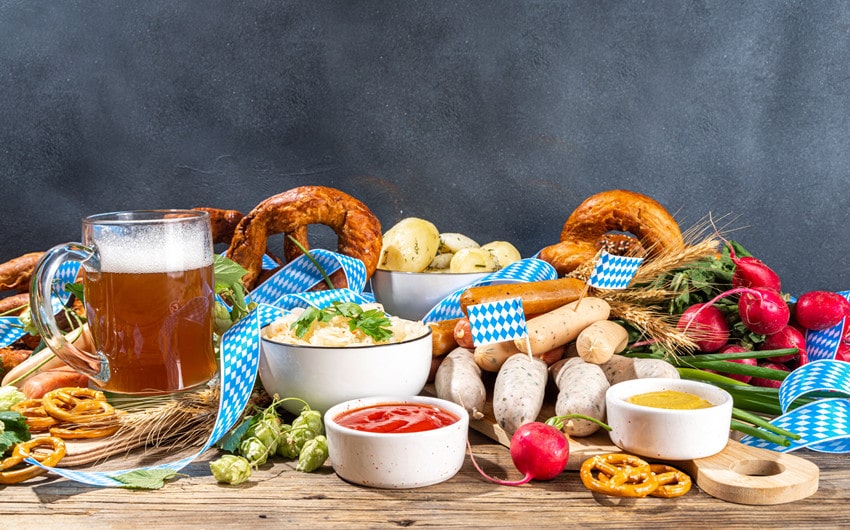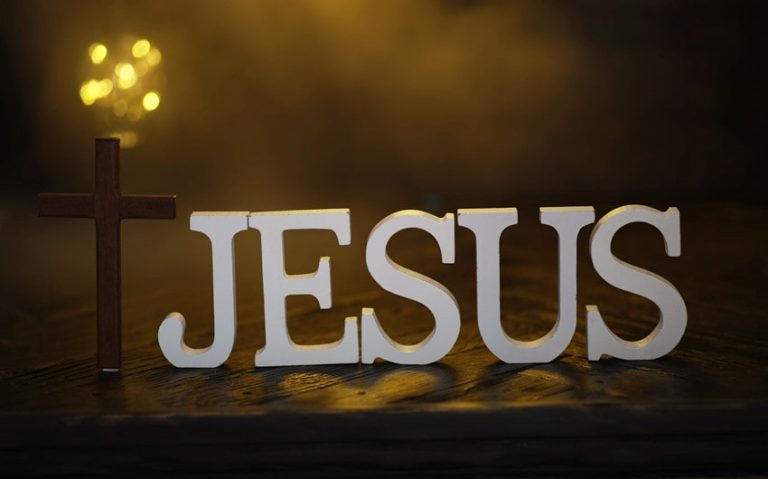Oktoberfest, the world’s largest Volksfest, is an annual festival in Munich, Germany. It originated in 1810 as a celebration of the marriage ceremony of the crown Prince of Bavaria. This two-week festival takes place from mid to late September and ends on the first Sunday of October.
While beer is undoubtedly a star attraction of Oktoberfest, it is about much more than just drinking. It’s a celebration of Bavarian culture, with traditional music, food, and traditional German attire adding to the merriment. From lively oompah performances to colorful dirndls and lederhosen, the atmosphere is electric and blissful, similar to what it was originally.
Origin of German Oktoberfest
The festival began on October 12, 1810, when Crown Prince Ludwig (Later King Ludwig 1) decided to tie the knot with Princess Therese of Saxe-Hildburghausen in Munich. All the citizens were invited wholeheartedly to join the festivities on the Theresienwiese (Theresa’s Meadow). These wedding festivities were enjoyed by everyone to the extent that they decided to re-celebrate in the same way each year.
Continuous Historic Developments
On October 17th of the same year, a horse race was held in front of the city gates in honor of the newlywed couple. Similarly, in the year 1818, the festival introduced booths serving food and drinks, offering visitors a taste of traditional Bavarian cuisine.
Most notably, in October 1881, the festival was repeated with the aim of promoting agriculture in Bavaria. The celebration continued in subsequent years except during the Napoleonic wars. A celebratory parade was arranged annually in honor of Prince Ludwig and Theresa’s marriage.
In 1887, the festival introduced restaurants and breweries. There was a suspension of Oktoberfest during World War I and World War II. Since its inauguration, there have been 24 cancellations of the festival. In 1980, there was a bomb blast that killed 13 people and injured over 201 people.
Today, around 16 million national and international visitors happily visit the original festival grounds – also called Theresienwiese or Wiesn in honor of Princess Therese’s fields – every year. They dress in the official Oktoberfest costume, that is, men’s lederhosen and women’s dirndl, to embrace the Bavarian traditions in the true sense. Oktoberfest has become one of the most iconic celebrations of Bavarian and German culture. Thousands of Oktoberfest-inspired events also pop up outside of this European country.
A Look at Oktoberfest Then and Now
Fast forward over two centuries, Oktoberfest is a world away from the celebrations of 1818. Back then, it was a much smaller affair, focused on horse races and agricultural fairs to showcase Bavarian bounty. The iconic beer halls were non-existent, with merrymakers simply grabbing brews from temporary stands.
Today, the festival revolves around massive beer tents, each microcosm of Bavarian culture with its own beer and atmosphere. Amusement rides and international crowds add to the mix, making Oktoberfest a global phenomenon compared to the local celebration of its origins. The Following are the alluring features of Oktoberfest:
Oktoberfest Tents : The Soul of Oktoberfest
One of the hallmark attractions of Oktoberfest is the consumption of beer. The total beer consumption during the festival exceeds 2 million gallons. The beer served at Oktoberfest is brewed especially for the occasion and adheres to strict quality standards. Each tent cultivates its ambiance with some overflowing with lively oompah bands and singalongs, while others offer a relaxed setting for conversations and camaraderie. But they all share a common thread that is focusing on celebration of Bavarian culture.
Kick-off Parades
The vibrant oktoberfest isn’t all about beer halls; the festivities kick off with a spectacular parade featuring two parts: The first is the parade of Oktoberfest Landlords and Breweries where festively decorated wagons carry frothy cargo- the first barrels of Oktoberfest beer towards the festival grounds.
It is followed by the grander Costume and Riflemen’s Parade on the first Sunday, featuring thousands of participants dressed in traditional attires, along with marching bands, historical riflemen, and even horse-drawn carriages across Munich’s city center, creating a colorful and lively prelude to the main event.
Delicious Delights
Oktoberfest is a feast for the senses, and the food is no exception. While the amber steins lager take the center stage, the Bavarian cuisine fuels the festivities. Delicious hearty sausages like bratwurst simmered in beer, roasted chickens (Hendl), and giant pretzels big enough to share. Moreover, Pork lovers can rejoice with Schweinebraten (a flavorful roasted pork dish) or Schweinebraten (a crispy roasted knuckle).
For a lighter option, try potato pancakes or cheese spreads like Obatzda. With its focus on comforting, crowd pleasing fare, Oktoberfest cuisine is the perfect complement to the celebratory atmosphere.
Thrilling Rides
This festival is a full-fledged carnival experience. The festival grounds transform into a wonderland of amusement rides catering to all thrill levels. Adrenaline junkies can take on the iconic Olympia Looping, the world’s largest transportable roller coaster, or plunge down the heart-stopping Skyfall.
For a nostalgic touch, there is the historic Munchner Rutsch, a giant slide enjoyed by generations of Oktoberfest visitors. Families with young children enjoy carousels, fun houses, and tamer rides, which ensure there is something for everyone to scream or giggle about.
From Humble Beginnings to Global Cheers
While Munich’s Oktoberfest reigns supreme, the spirit of celebration isn’t confined to Bavaria only. The Oktoberfest fever has spread across the globe, inspiring countless imitations. From Kitchener Waterloo in Canada, boasting the title of the world’s second-largest Oktoberfest, to Blumenau in Brazil, where German heritage meets Latin American flair, these international versions offer a taste of Bavarian culture with a local twist.
Oktoberfest celebrations even pop up in unexpected places like Hong Kong and China, raising a glass to the festival. Therefore, no matter where you are in the world, there’s a good chance you can find a Stein of Mazenbier and a celebration of Bavarian cheer.
Conclusion
Oktoberfest has always been about community; it is a time for people to come together, raise a glass, enjoy traditional food and music, and celebrate the prestigious Bavarian heritage. Family traditions: holiday traditions, importance, and respect are reflected in how families from all over the world gather at Oktoberfest to create everlasting memories and reconnect with their friends and family. The atmosphere is inclusive and welcoming for all, making it a fantastic opportunity to experience Bavarian culture firsthand.




